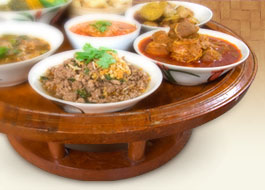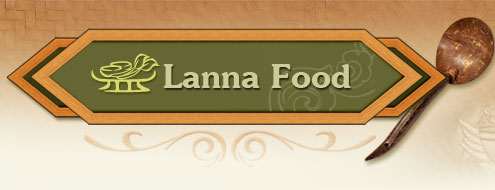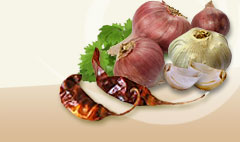Peanuts |
|
|
 | Arachis Hypopogaea Linn. |
|
| |
 | Leguminosae |
|
| |
 | Earth nut, Goober, Groundnut, Mani, Monkey Nut, Peanut |
|
| |
 | Thua din (Northern, Northestern); Thua khut (Prachuap Kirikhan); (Wut Wutithamwet, 1997, p. 225) |
|
| |
 | Annual, cultivated, shrub, hairy stems, upt to 80 cm. high. Leaves pinnate, 1.5-2.0 cm. wide, 2-3cm. long; leaflets 2 pairs, obvate. Inflorescence of cluster, axillary, yellow flowers. Pod cylindrical-oblong, with a hard shell, 1-5 cm. Seeds creamy or purple, 1-4 seeds. Blooms in the spring season and bears nuts in the winter, ripening underground. (Rangsan Chanta and Rattana Phromphichai, 1999, pp. 2635-2636) |
|
| |
 |

No information is available. The seeds can be cooked by boiling or steaming and are eaten straightaway. They can be mixed with sticky rice and made into khao tom mat or added to khao witu,khao mao, khao lam and khanom thian. Steamed or roasted peanuts with a little salt are sold at temple fairs. Tai Yai people add them to such recipes as kaeng hangle and namphrik khua. ((Rangsan Chanta and Rattana Phromphichai, 1999, pp. 2635-2636) |

Seeds are oily and sweet, good for synovial, tendril, general physical health, warming the body, relieving numbness and stimulating breast milk. Oil from the seeds helps lubricate the intestines, reduce constipation. Leaves are pulverized and placed on bruises, abscesses and used to reduce high blood pressure (Wut Wuthitamwet, 1997, p. 225) |
|
| |
 |
Rangsan Chanta and Rattana Phromphichai. (1999). Thua din. In Saranukrom Watthanatham Thai Phak Nuea (Vol. 5, pp. 2635-2636). Bangkok: The Siam Commercial Bank Foundation for the Encyclopedia of Thai Culture. (in Thai). Wut Wuthithamwet. (1997). Saranukrom Samunphrai Thai: Ruamlak Phecatchakam Thai. Bangkok: Odion Store. (in Thai). |
|
| |
|
|




